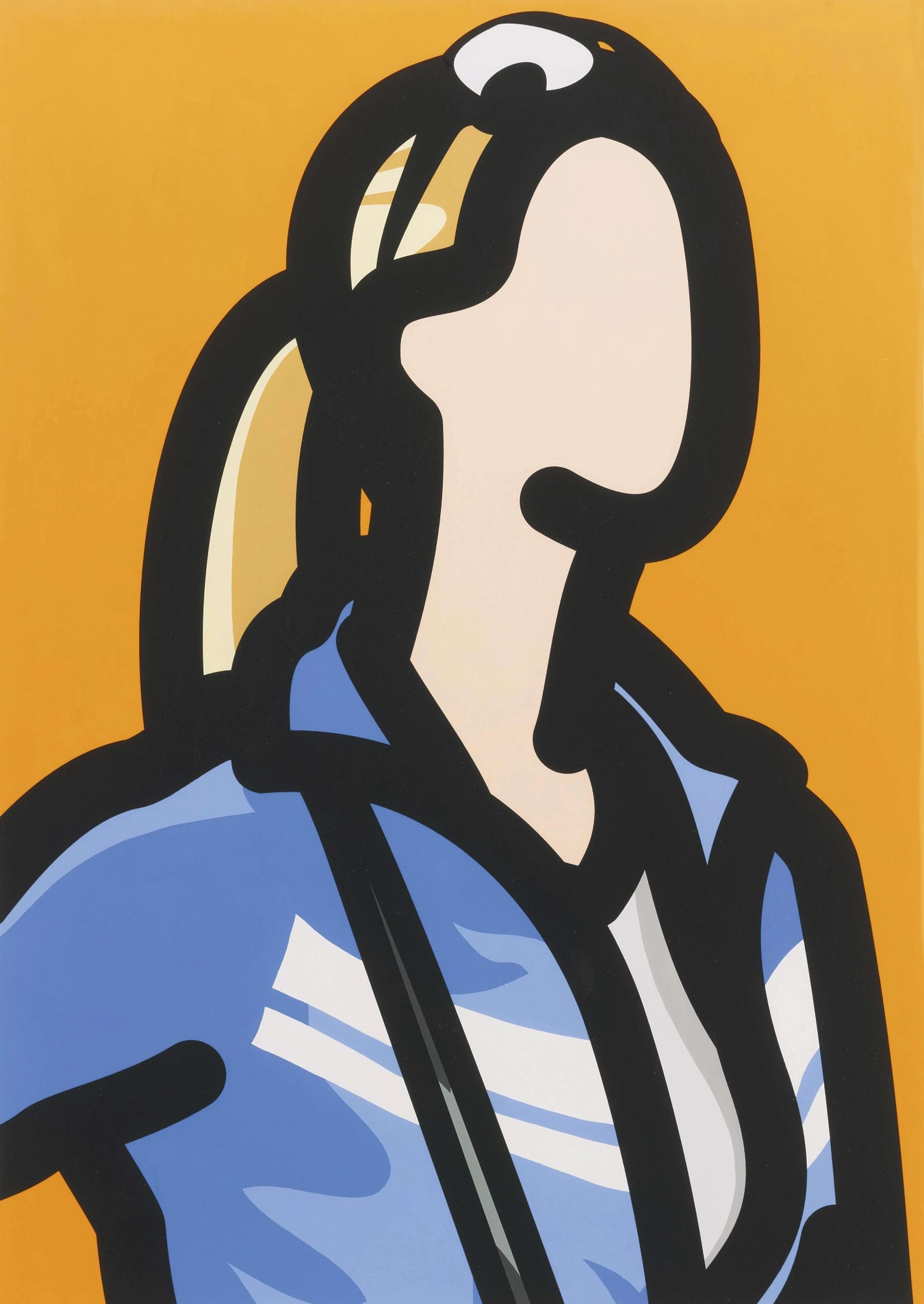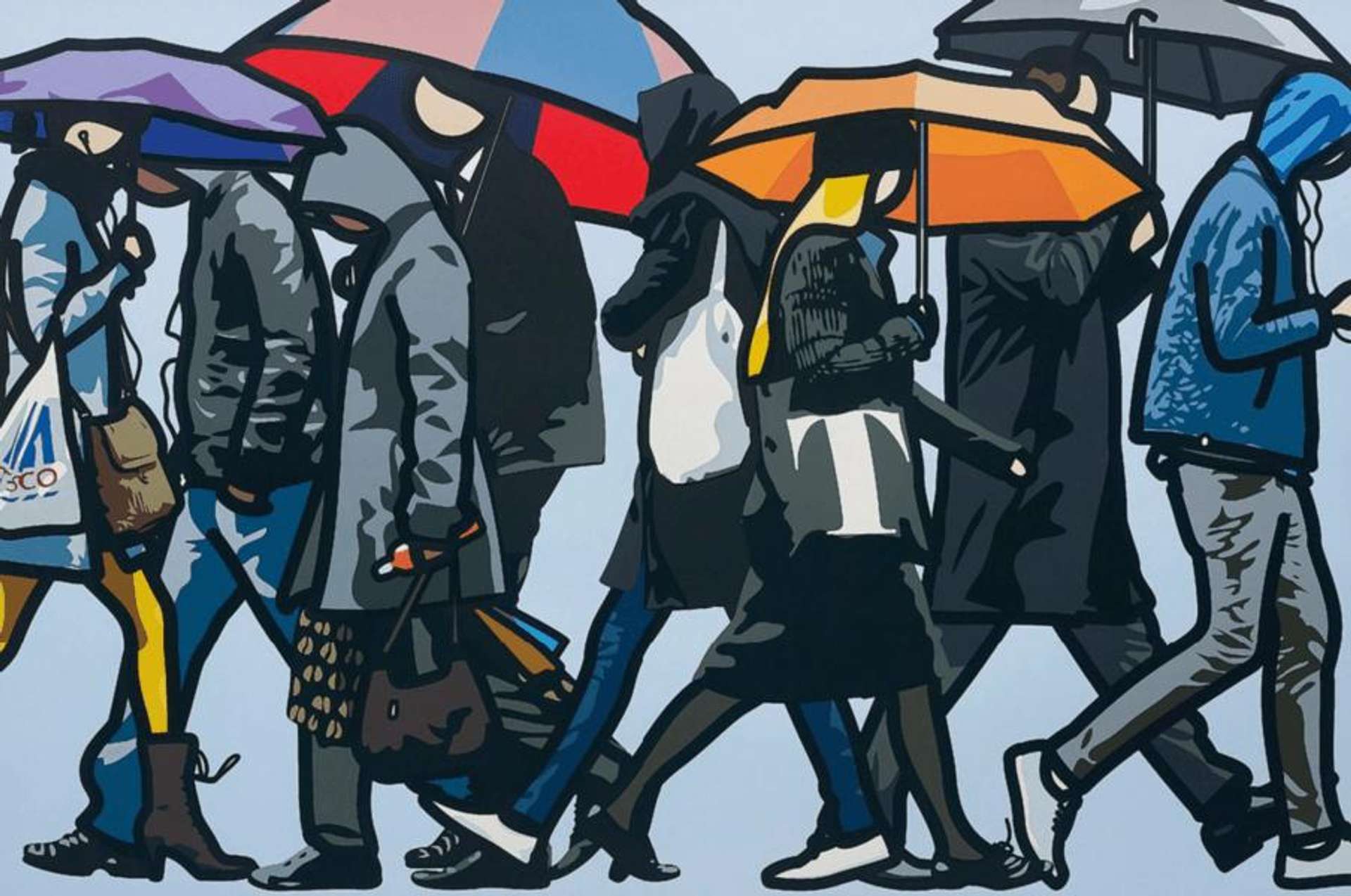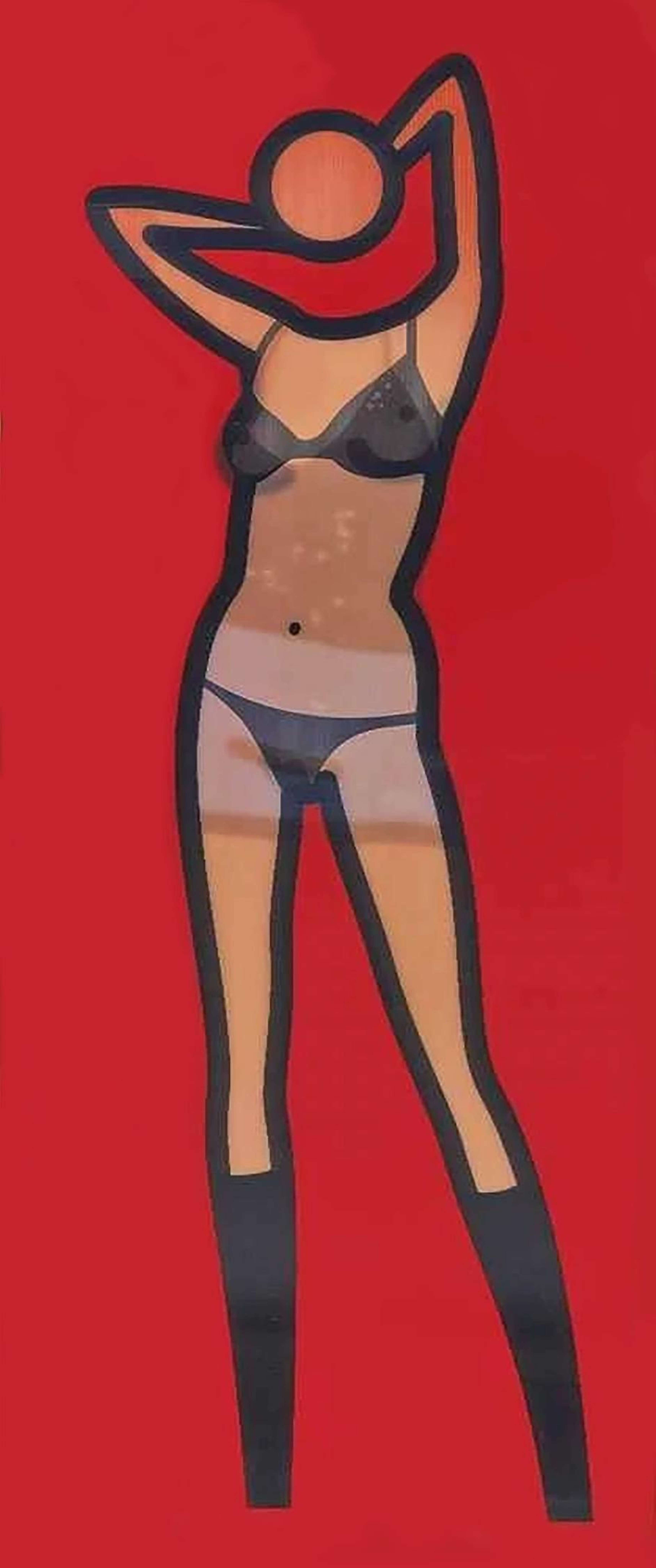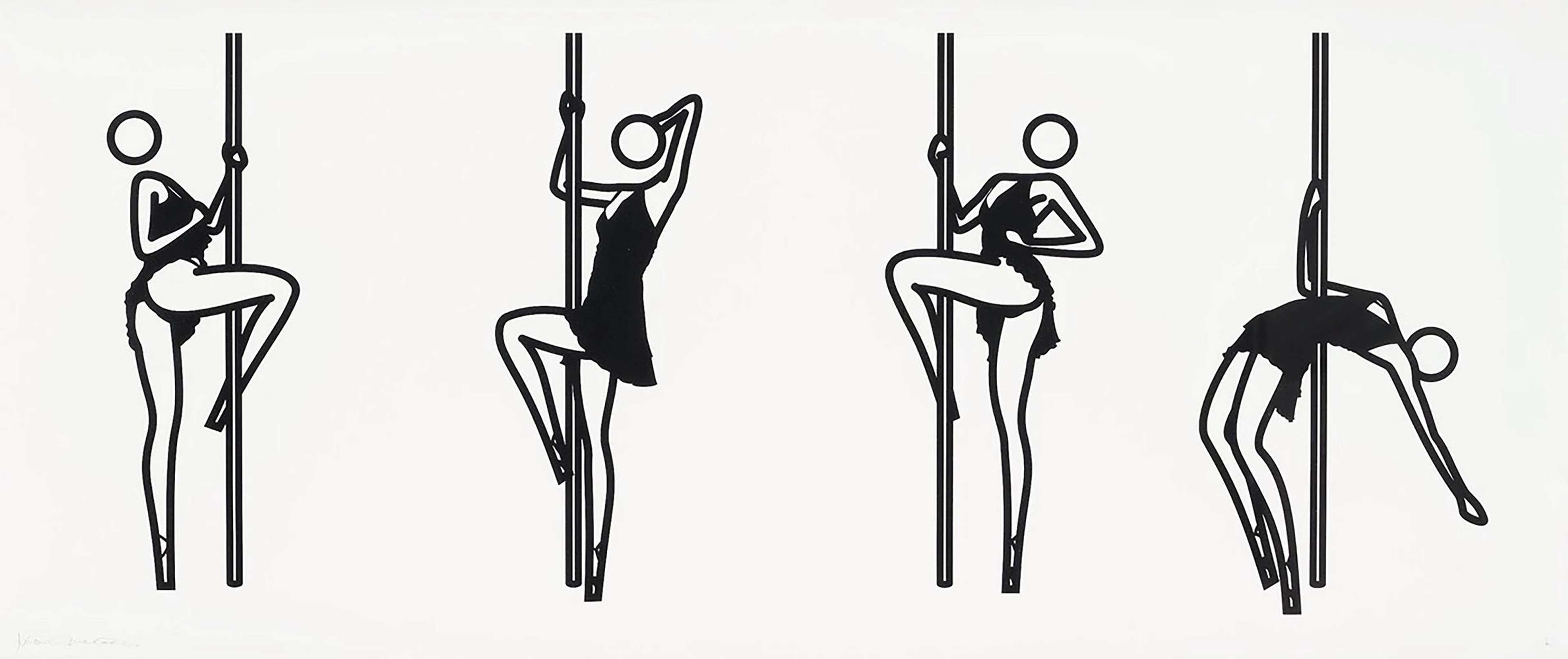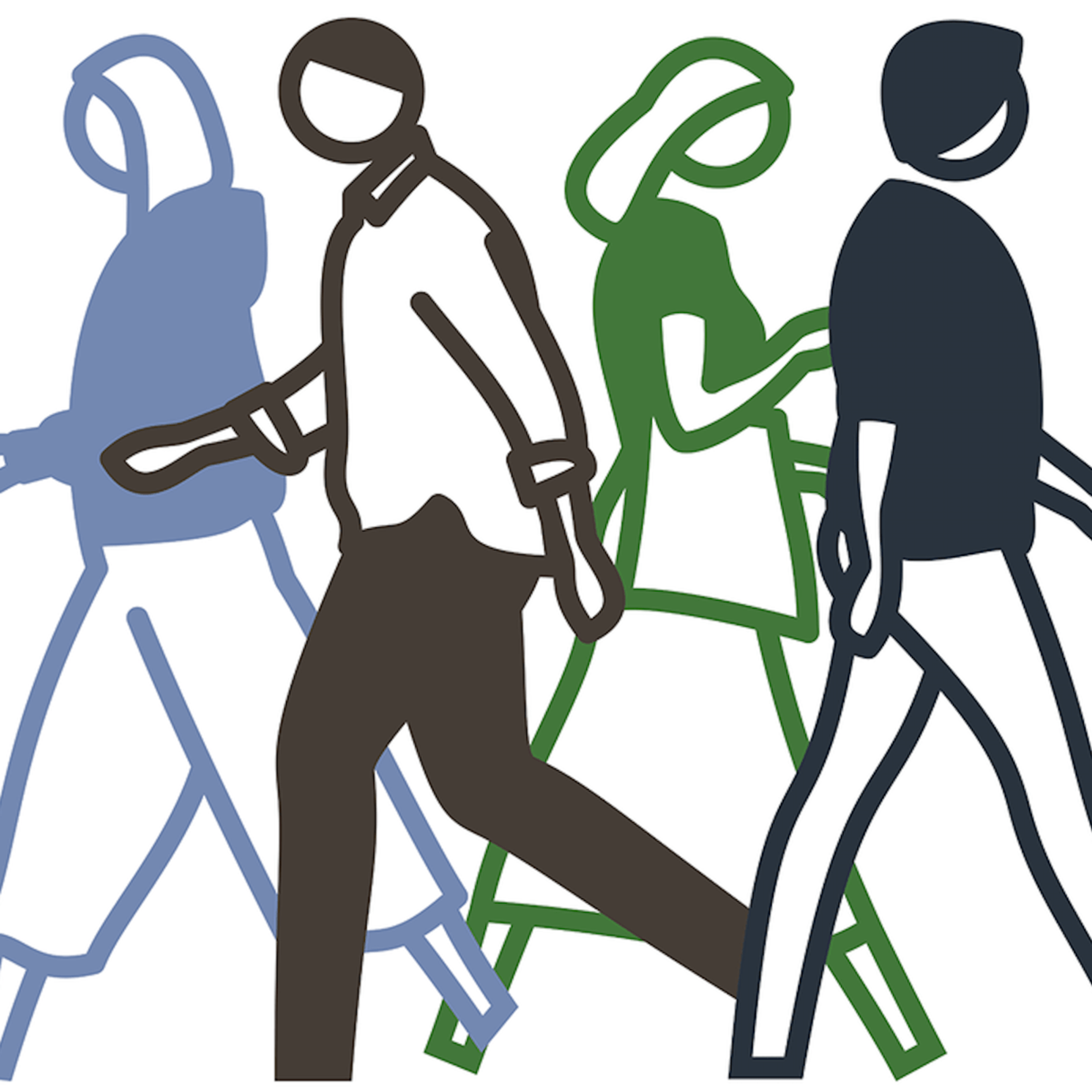 Old Street August 4 © Julian Opie 2020
Old Street August 4 © Julian Opie 2020
Julian Opie
295 works
Often characterised by its minimal or cartoonish style, Julian Opie’s work belies his ongoing dialogue with the history of art and the range of techniques he has been honing since he left art school in 1983. Here we take a closer look at how the artist goes about creating his artworks and the range of media and technology – from auto paint and steel to LED displays and lenticular prints – he has explored over the course of his prolific career.
What style does Opie work in?
Embracing the long tradition of portraiture in the history of art, Opie’s work aims to interrogate how images are perceived and understood. He does this by reducing them to their most essential elements – as a road or toilet sign would – to create a drawing, painting, print or moving image that is minimal, even cartoon-like, in style. In recent years his work has become more painterly, with his images incorporating further layers of colour and shadow as well as details that mark a significant departure from his ‘bubble head’ figures of the late 1990s and early 2000s.
How does Julian Opie create his work?
Most of Opie’s portraits or images of people walking start from photographs. His famous album cover for Blur’s 2000 Best of album saw the artist begin by making ‘digital drawings’ of each band in which he reduced their facial features down to a handful of essential lines that would convey their identity and personality. This was then digitally transferred onto a block colour background and produced in three sizes as a C-type print.
What materials does Opie use?
Steel
When Opie graduated from Goldsmiths in the early ’80s, he was exhibiting steel sculptures that bear little resemblance to his work today. Inspired by the New British Sculpture group, of which he was a member along with Tony Cragg and Anish Kapoor, and his art school tutors Michael Craig Martin and Richard Wentworth, Opie used steel to create replicas of everyday objects and products – perhaps in reference to Andy Warhol’s fascination with consumerism – and later produced a series of box-like sculptures that seemed to echo the minimalism of Donald Judd and Carl Andre. In the ’90s these became more architectural still until the early 2000s saw him exploring representations of the figure in metal.
Vinyl
Opie’s signature lines are often translated into road signs, as when he produced his 2002 work Escaped Animals for Tate Modern which involved transforming his drawing into vinyl that was then stuck onto an aluminium sheet. Opie has also created vinyl artworks for public art commissions on buildings such as Sadler’s Wells and Barts Hospital, both in 2003.
 Sadler's Wells © Julian Opie 2003
Sadler's Wells © Julian Opie 2003LED
Many of Opie’s most high profile artworks have been made using LED (Light Emitting Diode) screens which allow the artist to convey movement in his figures through a simple grid of alternating lights. From the display he created for U2’s Vertigo world tour to commissions for London’s Carnaby Street these works are hypnotic in their endless motion which references attempts by artists such as Edward Muybridge and Marcel Duchamp to capture movement on a flat surface. The grid-like formation of LED displays perfectly complements Opie’s simplified style of drawing figures, allowing his bubble headed men and women to stride purposefully towards an unknown future.
 Tina Walking 2 © Julian Opie 2010
Tina Walking 2 © Julian Opie 2010Lenticular prints
One of Opie’s most recent series, Walking In London, is produced as a lenticular print. This means that the artist has created a sequence of drawings, as if for animation, which are then layered on top of one another to create the illusion of movement when the viewer moves, and remain still when the viewer is still.
3D Printing
In 2012, Opie created a series of portraits that differed significantly from his previous work and demonstrated the artist’s love for technology and ability to evolve his style alongside the innovations of the 21st century. Made using a 3D printer, the heads are hand painted by the artist – as 3D printing did not yet allow for colour to be added to a sculpture – a task which he found daunting at first until, he says, he compared the works to a 3,000 year old Egyptian death mask that was in his private collection; “I often run out of nerve. I think, ‘I can’t do this’, and my hand is shaking and I think I need my glasses. The idea of what I’m doing … it makes me nervous.” In order to overcome these nerves he thought about the original maker of the mask and thought, “If he can do it then I can do it.” The resulting works show a level of detail and mastery of colour and tone that contrasts strongly with his digital works and flat art.
 Katie 1 © Julian Opie 2012
Katie 1 © Julian Opie 2012Painting
Many of Opie’s earliest figures are painted on wood, turned into modern monoliths that are somehow reminiscent of cardboard cut outs. The artist also experimented with painting on glass, and now paints largely on aluminium panels using auto paint, which lends his work a certain slickness that goes hand in hand with his minimal style.
 Old Street August 4 © Julian Opie 2020
Old Street August 4 © Julian Opie 2020Silkscreen
Opie has also created a number of silkscreen prints, often placed onto acrylic or wooden panels or canvas, echoing Warhol’s process which allowed him to produce editioned pieces without being limited to paper. Many of his more affordable editions are screen prints on paper however, and are highly sought after on the market today.
Inkjet & Digital Print
As an artist who is engaged in digital technologies it comes as no surprise that many of Opie’s prints are produced with inkjet and digital methods which allows for perfect reproduction without any of the labour of screen printing. This extremely modern process both complements and contrasts with the classical tradition behind Opie’s portraiture which is informed by 17th and 18th century styles.
Film
While Opie is perhaps better known for his LED animations, the artist has also created a number of ‘films’ of figures walking which are presented on LCD screens as continuous loops. Similarly hypnotic, they allow the artist to completely flatten and smooth the lines of his drawings to evoke the pure surface of his prints and paintings, while the LED figures had to be composed of dots – similar to Lichtenstein’s Ben Day dots – as a result of the composition of the grid of lights.
 Coloured Runners 1 © Julian Opie 2020
Coloured Runners 1 © Julian Opie 2020
